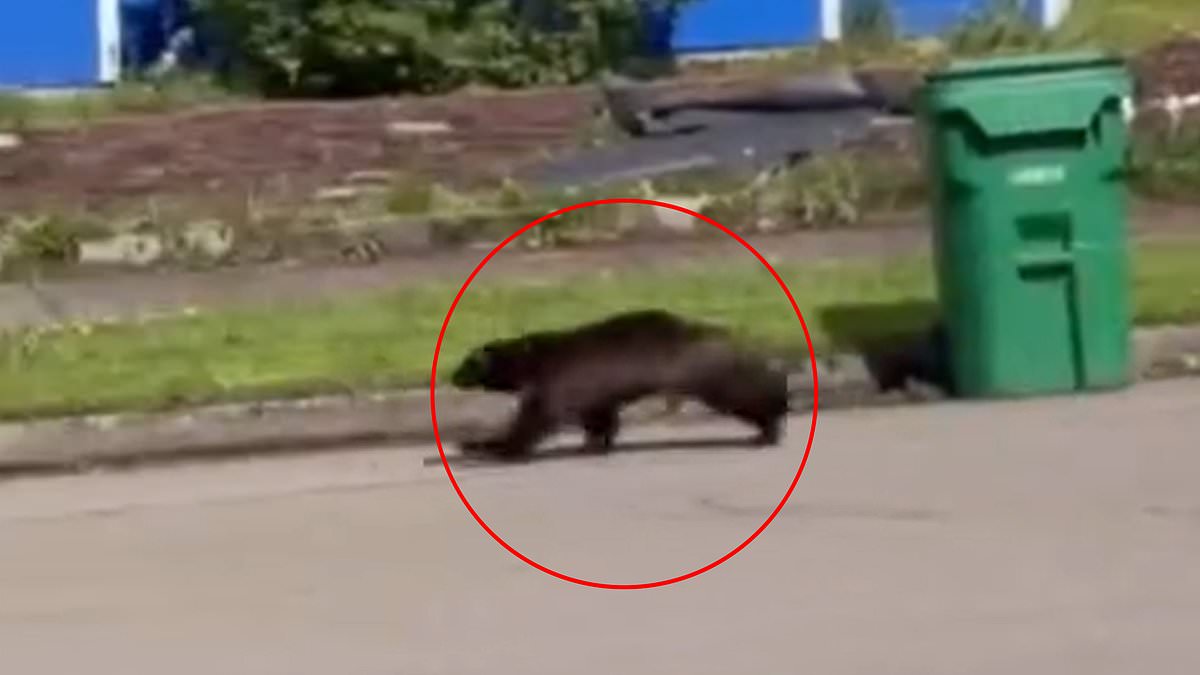Oregon residents were left stunned after spotting an incredibly rare wild animal sprinting down a suburban street.
Willie Gonia, 33, saw a flash of fur running down the road in his rural neighborhood in Eugene in April and ran out of his home with a camera in hand.
At first he thought the animal was a bear but was shocked to discover it was in fact a wolverine.
‘After a split second, I knew it wasn’t a bear and realized it was a wolverine. I had never seen one before in real life, just on wildlife shows,’ Gonia told The Dodo.

Oregon residents were left stunned after spotting an incredibly wolverine sprinting down a suburban street

Willie Gonia, 33, saw a flash of fur running down the road in his rural neighborhood in Eugene in April and ran out of his home with a camera in hand
Known to favor wintry climates, the National Wildlife Foundation estimates there are fewer than 300 wolverines in the lower 48 states.
Most are found in Alaska, where there are thought to be around two wolverines per 1,000 square miles.
Nicknamed the ‘woods devil’, wolverines have long and dense fur that is generally dark brown to black with a creamy white stripe running from each shoulder along the flanks to the base of the tail.
Like bears, wolverines, or ‘gluttons’, walk on the soles of their feet and have curved, semi-retractile claws that allow them to climb trees.

Pictured: Eugene, Oregon, where a wolverine was spotted running down the street

Like bears, wolverines, or ‘gluttons’, walk on the soles of their feet and have curved, semi-retractile claws that allow them to climb trees
They are also well suited to travel through deep snow as they are most often found in northern Canada, Russia, Siberia and Nordic countries in Europe.
Known to be the largest of the Mustelidae – a diverse family of carnivorous mammals – wolverines are primarily solitary creatures.
Boasting a thick and stocky body with short legs, the wolverine often travels extensively in search of food – sometimes as far as 40 miles in a day.
Because the ‘skunk bear’s’ favored climate is not typically very nutrient-dense, the 20- to 40-pound animal has become opportunistic, eating anything they can find or kill.
Male wolverines are larger than females, yet still only 33 to 44 inches long, making the mammal an easy target for wolves, bears and mountain lions.

Pictured: Willie Gonia, who captured the wolverine on camera
Females make dens in deep snow, usually requiring five or more feet to protect her young from cold and predators. For this reason dens are usually high up at 7,000 feet or more in altitude.
‘It is extremely uncommon to see [a] wolverine anywhere, let alone in an urban or suburban environment,’ Cascadia Wildlands conservation director Bethany Cotton told The Dodo.
‘Having one present in a city, even for a few hours, is exceedingly rare,’ she added.
The animals are currently protected by the federal Endangered Species Act.
‘Because of their need for late, deep spring snowpack for their denning and rearing, wolverines are particularly vulnerable to climate change and thus are a warning species for the severity of climate impacts,’ Cotton said.
